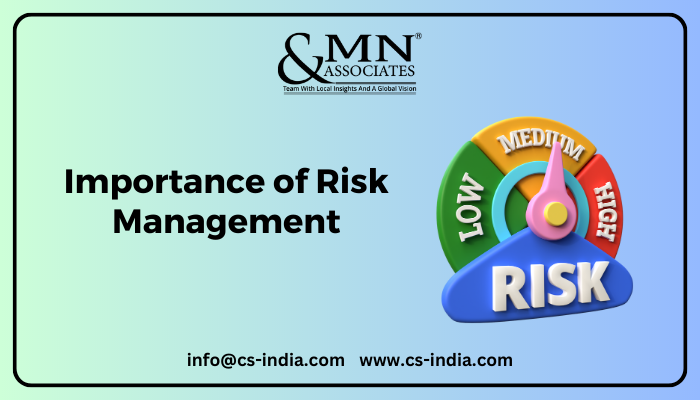Addressing the Unseen Risks: The Importance of Risk Management in Technology
Addressing the Unseen Risks: The Importance of Risk Management in Technology
Blog Article
Discovering the Importance of Risk Management for Effective Decision-Making Techniques
In the intricate world of service, Risk Management emerges as a critical element in the decision-making process. The capacity to identify prospective hazards and chances, and strategize as necessary, can spell the difference in between success and failure.
Recognizing the Concept of Risk Management
Risk Management, an important part in decision-making, is often misconstrued or oversimplified. Normally, it refers to the identification, analysis, and prioritization of dangers to reduce, keep track of, and regulate the chance or effect of unfavorable occasions. Nevertheless, it's not simply about stopping negative results, yet likewise about recognizing possible opportunities. Risk Management entails organized and regimented strategies, making use of data and informative evaluations. It needs a detailed understanding of the company's context, purposes, and the potential risks that might thwart them. From monetary uncertainties, lawful obligations, critical Management mistakes, to accidents and all-natural disasters, it attends to various threats. Importantly, efficient Risk Management is not stagnant; it's a continuous, progressive procedure that progresses with changing scenarios.
The Duty of Risk Management in Decision-Making Processes
In the world of tactical preparation and service procedures, Risk Management plays an important function in decision-making procedures. Risk Management hence comes to be a vital tool in decision-making, assisting leaders to make enlightened choices based on a comprehensive understanding of the risks included. Risk Management offers as an important part in the decision-making processes of any type of company.

Just How Risk Management Enhances Strategic Planning
In the context of calculated planning, Risk Management plays a crucial role. Starting with the identification of possible threats, it better includes the execution of Risk mitigation steps. The function of Risk Management is not fixed but vibrant, as it demands consistent monitoring and adjusting of strategies.
Recognizing Prospective Risks
Executing Risk Mitigation
Having developed the significance of recognizing prospective risks, the next step is to explore Risk reduction. This process includes creating and implementing techniques to manage determined risks properly. It is an important aspect of tactical preparation as it boosts decision-making by lessening possible adverse outcomes. Risk reduction methods can range from Risk avoidance, Risk transfer, to run the risk of reduction. Each strategy ought to be tailored to the particular Risk, considering its prospective influence and the company's Risk tolerance. Additionally, effective Risk reduction requires a deep understanding of the Risk landscape and the potential impact of each Risk. This understanding makes it possible for companies to prioritize threats and allot resources efficiently, making certain that the most considerable threats are resolved initially.
Surveillance and Readjusting Strategies
Though Risk read review reduction is an important action in tactical preparation, constant surveillance and change of these strategies is similarly vital. This continuous procedure allows organizations to identify new dangers and reassess existing ones, making certain the applied you can find out more techniques continue to be efficient in the ever-changing company atmosphere. It likewise supplies an opportunity to assess the success of the Risk Management measures, allowing changes to be made where essential, additional boosting strategic planning. Efficient tracking and change need using analytics and vital efficiency signs (KPIs) to determine efficiency. These devices offer beneficial data-driven understandings that can educate calculated decision-making. As a result, surveillance and adjusting Risk Management methods is an important part for improving an organization's strength and critical planning.
Case Studies: Effective Risk Management and Decision-Making
In the world of company and money, successful Risk Management and decision-making often offer as the pillars of flourishing business. These cases highlight the worth of astute Risk Management in decision-making procedures. These situations emphasize the essential function of Risk Management in tactical decision-making.
Tools and Methods for Effective Risk Management
Navigating the complex labyrinth of Risk Management calls for the appropriate collection of methods and tools. These devices, such as Risk signs up and heat maps, aid in determining and analyzing possible threats. Methods include both measurable approaches, like level of sensitivity evaluation, and qualitative approaches, such as SWOT analysis. These aid in focusing on dangers based on their possible influence and chance. Risk action strategies, a crucial part of Risk Management, include accepting, preventing, transferring, or mitigating dangers. Monitoring and controlling dangers, with regular audits and evaluations, make sure that the strategies continue Find Out More to be reliable. With these devices and techniques, decision-makers can browse the complicated landscape of Risk Management, thereby assisting in notified and efficient decision-making.
Future Trends in Risk Management and Decision-Making Techniques
As we explore the huge landscape of Risk Management, it ends up being obvious that the devices and methods made use of today will certainly proceed to progress. The idea of Risk culture, where every participant of a company is conscious and involved in Risk Management, will certainly obtain a lot more importance. These fads declare a more proactive and inclusive technique towards Risk Management and decision-making.
Verdict

Risk Management hence ends up being a crucial device in decision-making, assisting leaders to make enlightened selections based on a thorough understanding of the threats included. Risk mitigation methods can vary from Risk avoidance, Risk transfer, to risk reduction (importance of risk management). Efficient Risk reduction needs a deep understanding of the Risk landscape and the prospective effect of each Risk. Risk action approaches, an essential component of Risk Management, entail approving, staying clear of, transferring, or mitigating risks. The idea of Risk society, where every participant of a company is conscious and entailed in Risk Management, will gain a lot more prominence
Report this page